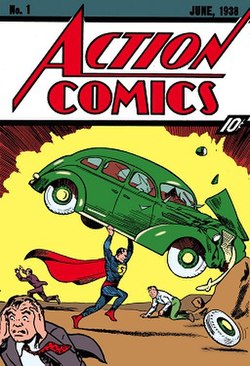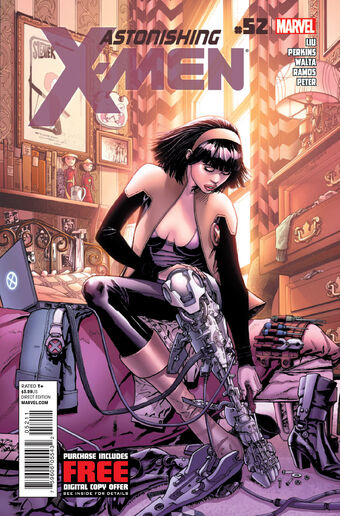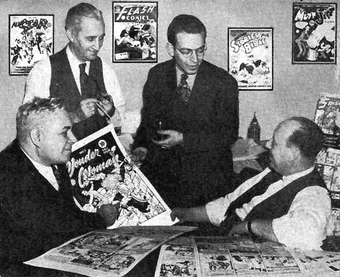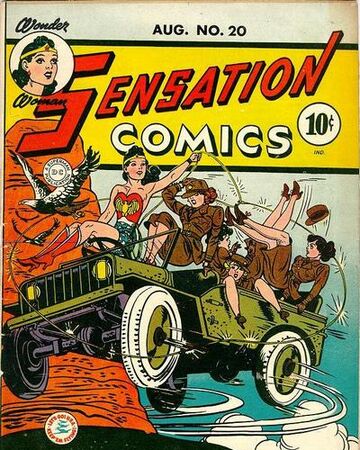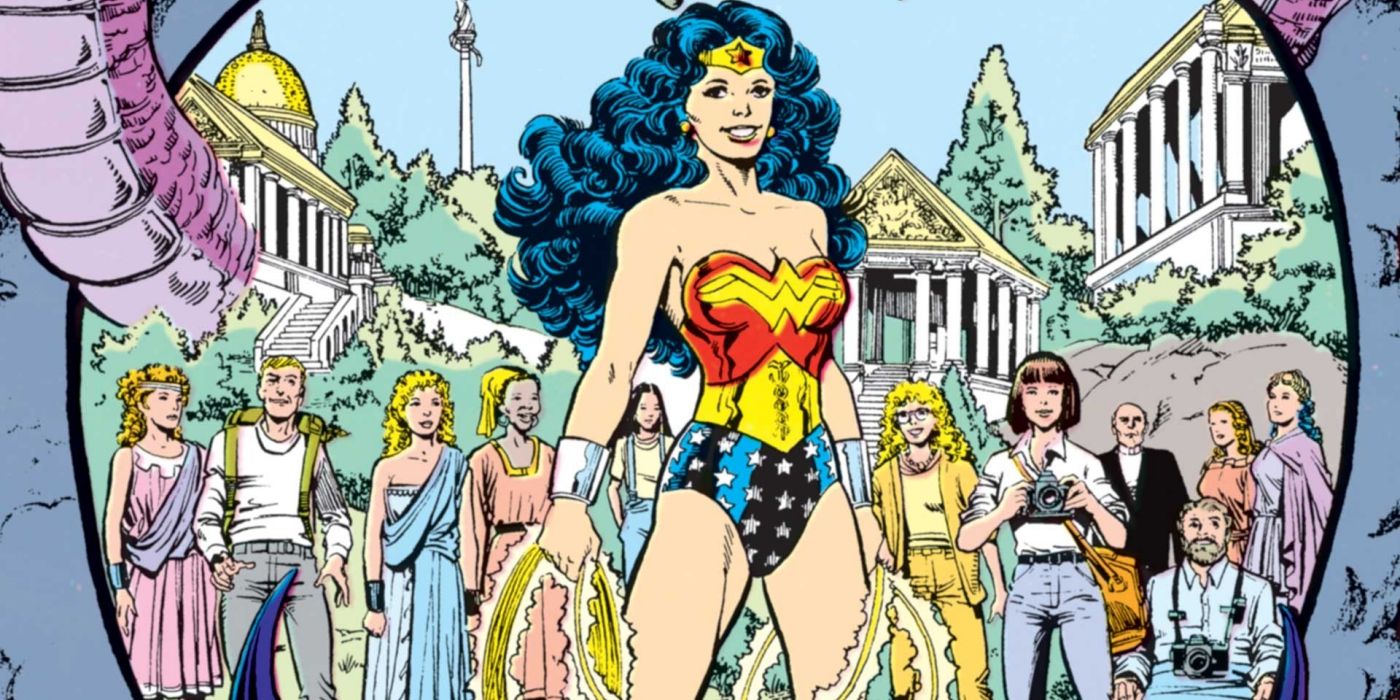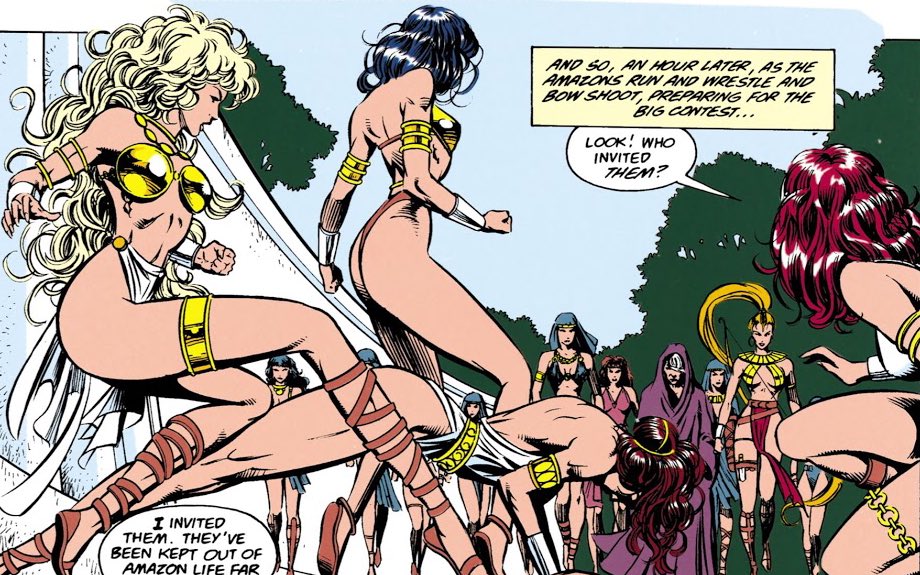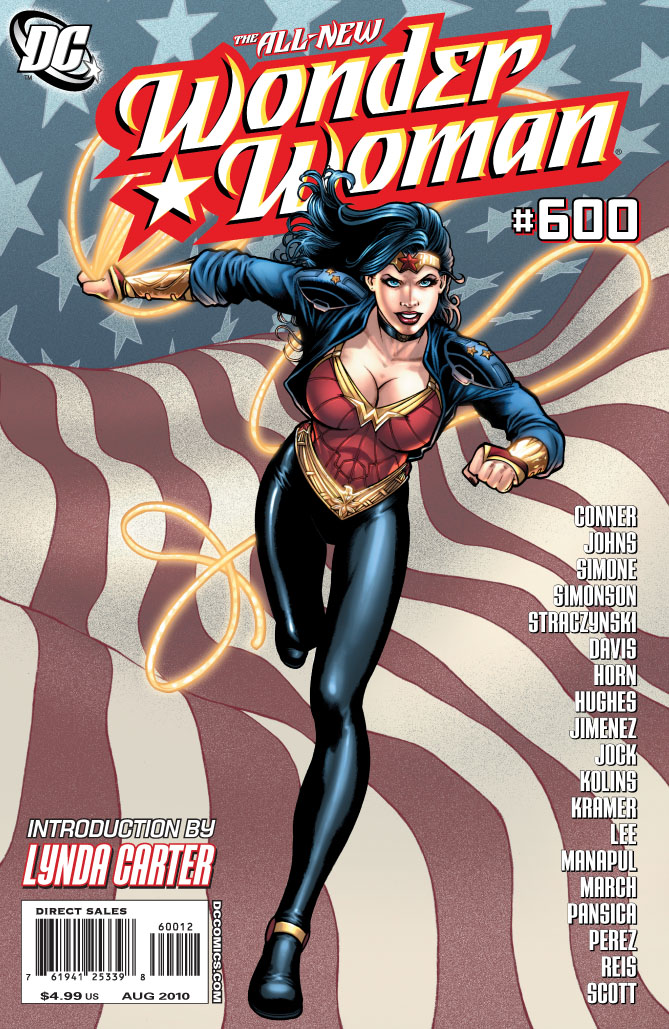What do Superman and the Fantastic Four have in common? Well they both started superhero comics franchises, have endlessly optimistic main characters, white skin and had a steep decline in popularity in the 1980’s that neither have recovered from. But why is that, well I forgot that they both embody “leftist” ideals, and the heroes that replaced them in popularity are more conservative (to varying degrees). A superhero actually can’t be apolitical, a Superhero needs to fight something and what they fight must be bad. When people say “don’t put politics in comics” they mean “put my politics in your comic”, because people have a hard time finding their own politics in things, it’s much easier to rally against the enemy than to say “that is just how I see the world”.
Superman first debuted in 1938 with his first story “The Champion of the oppressed”, (a clearly political title). Being in the first issue of an experimental idea by National Comics his future was not certain, the plug could’ve been pulled at any time. Knowing it may be the only chance for the world to see their Superman, Jerry Siegel and Joe Shuster put everything they could into the story. The page layouts where radically different to everything else (even the other stories in the magazine), normally comic pages where made in with regular sized panels so the story could be reprinted in newspapers. The layouts in Superman’s first story are different long tall panels to show him leaping into the air and one of Superman smashing a car over his head onto a rock that takes of 2/3 of the page (this is also the iconic image from the front cover that was chosen last minute). The story is also a laundry list of the baddies Superman would face, corrupt bosses, spousal abusers and gangsters. Despite the all in feel of the first story it sets up the second where Superman forces arms dealers to go to war to see what their weapons do. The early Superman is more heavy-handed than his later incarnations busting through doorways declaring “learn some compassion or I’ll beat it into you”. An often overlooked and under appreciated part of the early Superman books is Lois Lane. A mistake made by onlookers about Lois is that she is just a shrinking violet who is easily caught by Superman’s enemies. That is not true. Lois is a headstrong career gal and the Daily Planet’s best reporter, resourceful and stubborn which gets her into trouble. It’s really debatable if she even needs Superman to save her some of the time, but why bother when he will and with his involvement you’ll get the front-page story. Clark Kent as a reporter lives in her shadow, that is because of his faux-timid demeanour he can’t put himself into the same risks as Lois, if he did the world might find out he’s Superman.
Clark Kent was a self insert of Jerry Siegel, a timid meagre unathletic man with Superman as his fantasy (girls are ignoring me but thats because they don’t know who I really am). Now this wish fulfilment and power fantasy are common in fiction but Superman was different. Siegel’s wish was to use his amazing power to try and fix the world and be the father he wishes he had. It’s interesting that Mort Weisenger (national comics editor), Jerry Siegel and Joe Shuster all grew up without a dad and their creation Superman is, a strong, caring man who stands up for the weak. An authority figure whose goal is to guide mankind to a brighter future. Coming from the destroyed world of Krypton, Superman’s goal was not conquest like his pulp alien precursors, his goal was to warn us about the pitfalls of progress. We must progress in a way that isn’t destructive, to teach us not to be prejudiced or creedist and we must unite to create a better tomorrow. Superman drew influence from mythology, mankind has always told stories of great saviours like King Arthur or beings of great strength like Hercules but Superman was an industrial-era update of these concepts. Superman’s whole costume is designed to tell you who he is at a single glance, a circus strong-man belt and pants to show he’s strong, a cape similar to a rabbis robe to symbolise his wisdom doubling as a way to show if in picture his leap is taking off or landing, no mask to show he’s not hiding, a shield on his chest show he’s a protector and brightly coloured tights with no mask to show how confident he is. He sheds his work clothes of Clark Kent to become Superman to show he isn’t hiding anymore he’s proud of who he is, this has led to Superman being popular with gays and minorities as they’ve often felt they needed to hide who they really are when their true culture is something beautiful in itself.
With the success of Superman stories imitators had to come along it was inevitable, but only two in “The Golden Age” of comics where ever a threat to his title of the most popular superhero and they both did it by appealing more to children. One being the original Captain Marvel, an orphaned newspaper boy who by yelling “SHAZAM!” can become the oedipal wet dream of an amazing super-dad. The other being The Black Terror a pharmacist who takes vitamin x and gains superpowers. The Black Terror also introduced the idea of the kid sidekick which became a staple of comics, so much so Superman even gained one with Jimmy Olsen an orphaned boy (he had to be an orphan so nobody could sue for reckless child endangerment) who became the Daily Planets cub reporter.
Superman’s leftist stance lessened with Siegel and Shuster being accused of being communists, so when a soft relaunch of Superman into his own book his backstory was fleshed out (Superman still to this day appears in Action Comics). While the Fleischer Superman cartoons explicitly state he was raised in an orphanage after crashing to earth this was now retconned to landing outside Ma and Pa Kent’s farm who raised Clark to be a good American who believed whole heartedly in the inscription of the statue of liberty, the bill of rights and the declaration of independence (which actually reads a lot like the communist manifesto just saying).
With a popular platform Siegel and Shuster couldn’t keep their political views quiet for too long and with the rise of fascism over Europe why should they. Superman was one of the first to speak up against it, in an out of canon published in Look magazine Superman busts through the Third Reich and Mussolini’s guard to put Adolf Hitler and Benito Mussolini on trial for crimes against humanity. More superheroes were created to motivate Americans to stop the Axis, like Captain America whose creator Jack Kirby once said “I don’t have any political views I just hate Nazis” (more on him later). Superhero comics where very enthusiastic to join in the war effort, a lot of anti-Nazi comics started before america had even joined World War 2 and with good reason. Comics where one of the few places Jews could get jobs, with them being deemed as low art for kids they weren’t seen as a glamorous form of writing and most used pseudonyms so the publishers didn’t have to deal with anti-semitism.
In the comics during World War 2 Superman became Americas secret weapon but once it finished we got Action Comics 101 (published one month after the war was declared over) where Superman documents atomic bomb tests and calls the bomb itself the greatest evil in the world. With the war over Superman was not going to be the military’s stooge again. But superhero comics steeply declined in popularity after the war so this story effectively ended the Golden age of superhero comics.
This war with the atomic bomb defined the next era of Superman comics but they called the bomb Kryptonite. The radioactive rock was Superman’s main weakness, often used by mad scientists and their experiments to defeat the man of tomorrow. Green Kryptonite slowly poisoned and drained him of his super strength and Red Kryptonite horribly distorted Superman sometimes physically and sometimes mentally. Like atomic radiation Kryptonite was also useful, it could be used as a fuel source similar to chemotherapy in small doses it could cure earthlings illnesses, but it could always fall into the wrong hands.
The new wave of Superheroes shared this outlook that science is mankind’s salvation whilst fearing the bomb, starting this wave was the rebooted Flash but this idea would be best embodied by Stan Lee and Jack Kirby’s Fantastic Four. While the Flash was created to teach children scientific ideas, and if young boys learnt about friction from a man in a red suit running around a gorilla, who’s to argue with that, Marvel’s comics were sci-fi horror. The Fantastic Four where mutated by Cosmic radiation after travelling in an unsafe rocket-ship to beat the Russians in the space race. Now with powers that were a mixed blessing, led by Reed Richard manly scientist who is as rugged as he is smart (and did I mention he’s the smartest man in the world) they perform experiments and explore the universe. The Lee Kirby era introduced the majority of the Marvel universe like the Unamerican group of ex-Nazis and their sympathisers known as Hydra. Latveria is a land ruled by a traditionalist, occultist and mad scientist Dr Doom. More progressively their allied nation is Wakanda which is technologically more advanced than the rest of the world and located in Africa.
image photoshopped by James Dawson
Marvel attempted at making superheroes for conservatives like Iron Man, Tony Stark was created with the sole purpose of being a hero Marvel’s current counter culture readership would hate and it worked. Iron Man wasn’t popular until his movie (in fact when the MCU started Iron Man and the Avenger’s comics had been cancelled due to low sales). Iron Man stayed in print by being paired with Captain America, Superhero comics having only one story was a new idea at the time and many of Marvel’s heroes shared a book; Strange Tales of Dr Strange and Nick Fury, Tales to Astonish was the Hulk and Namor and Tales of Suspense was for the conservative fans. DC also had conservative superheroes, Green Lantern and Batman are essentially good cop heroes (Batman in the 66 Television series does flirt with being a counter culture hero) and these characters would soon get overhauls by Dennis O’Neil and Neal Adams. Green Lantern would be paired with Green Arrow to argue ideology and Batman would lose his sidekick to college and become as violent as the Comics Code Authority would allow.
Feeling under appreciated Jack Kirby left Marvel comics and was quickly hired by their biggest competitor who offered him total freedom as long as he wrote and drew one Superman book a month. Not wanting to put anyone out of a job Jack chose as his Superman series Jimmy Olsen which became part of his (retroactively named) Fourth World Saga. This was an exploration of hippie culture with the good parts being embodied by New Genesis, like peace, love and The Beatles. The bad like Charles Manson’s seduction of young girls to join his white supremacist cult was Darkseid and Apokolips. Darkseid was also not so subtly based on Nazi’s complete with Germanic spell of side. Superman’s role in this was as a square Dad who wanted to be part of the good parts but being worried that the good was being steamrolled by the evil. Post-Kirby the Marvel universe suffered from a lack of originality, mostly churning out monthly comics shallowly expanding on concepts he produced with one exception the relaunched X-men. The X-men were a Lee/Kirby series but during their run it felt more like a copy of the Fantastic Four but with a younger cast of characters. With the relaunched series the X-men stopped being a bunch of white teenagers but a diverse group of heroes and continuing through the Claremont era getting more and more diverse so much so nobody looks twice at the fact they have a one-legged vietnamese lesbian.
John Byrne made a name for himself in the comics industry as an artist on X-men, but due to creative differences with Chris Claremont the two parted ways and Byrne took over the Fantastic Four. With Byrne as writer and artist on Fantastic Four the sales increased to make his run on F4 the second most popular era (behind the original Lee/Kirby). DC wanting to continue a trend they hired Byrne to reboot Superman in 1988. This in a lot of ways was the last hurrah for the Man of Steel, despite an obsession with trying to explain how his powers would work without breaking the laws of physics. The Man of Steel reboot reset the Superman lore, before it Clark Kent was a news anchor not his more recognisable newspaper reporter and his supporting cast where expanded to having 3 single mothers; Maggie Sawyer (a cop in charge of special unit trained to takedown superpowered threats), Cat Grant (The Daily Planets gossip columnist) and Sarah Olsen (the mother of Jimmy proving that single mothers can raise children to be responsible adults). Lex Luthor was also reinvented for this era, his original version was a Nazi cult leader, then he was a gangster and then in the 50’s he became a Mad scientist but his most sinister incarnation came in the late 80’s Donald Trump. Byrne had no idea that after his tenure of Superman his evil industrialist would become the president and then later his real world inspiration would be inspired by this.
The rise of Comic book shops opened the door to new independent publishers and challenge the duopoly of Marvel and DC. One of the great things about comics is their expensiveness, so with a market of independent writers and artist would be a mixed blessing. One of the biggest success stories of the early self published comics was Dave Sim, his work started off innocuous enough a barbarian parody comic about an aardvark but as time went on Sims work became more and more political. Dave Sim influenced others to make their own comics like Jeff Smith (Bone), Eastman and Laird (Teenage Mutant Ninja Turtles) but Sim’s views on the world are not conventional. Dave Sim believes feminism is destroying the world and the only way to stop the spread is to save young girls from it at a young age by making them do things (basically he’s a paedophile with a cause). Fortunately Sim has never worked on a mainstream comic book series.
With the rise of outspoken comic book creators the medium itself was determined to be taken more seriously. Unfortunately they forgot the difference between thoughtful and cynical. Deconstructions of the superhero started cropping up like The Dark Knight Returns and Watchmen. An important thing to remember about deconstruction is you have to actually deconstruct something, he deconstruct a building you have bricks, you deconstruct brick you have gravel. Since the publication of Dark Knight Returns and Watchmen very few honest superhero properties have become popular (exceptions being Alan Moore’s later work Tom Strong and Promethea, Savage Dragon, Invincible and the PJ Masks). Superhero deconstructions have gotten so plentiful that they’re well trodden ground like One Punch Man. One Punch Man has absolutely nothing to say, it’s 2nd rate Venture Brothers and a 3rd rate Tick but it’s popular for some reason (despite awful art and blatant homophobia).
90’s Superhero comics loved using this phrase “Not your Dad’s Comic books”, this is very true because my Dad’s comic books were actually good. The new heroes weren’t heroes they were paramilitary groups. The New Mutants became X-Force and the implied child soldiers aspect became the text, Cable wasn’t training children to be diplomats he was making them weapons. The popularity of Rob Liefeld and the end of the Comics code authority meant that comics were violence for the desensitised. Full of Reagan era patriotism and bigger guns, storytelling was a secondary interest to creating variant covers for chumps to buy. Superman didn’t fit into this era very well so they killed him after character assaignating him first. Lobo was now DC’s best selling series, with a readership not getting he was meant as a parody of the increasing violence in comics, the fans didn’t care he was violent.
After the speculator boom these new heroes all disappeared but it’s legacy still remains. “Superman is unrelatable” is something I’ve heard for years but this statement is anti-humanist. The reason given is that Superman “saves people for no reward, he has no great tragedy in his back story and he’s too powerful”. This reasoning is awful, it’s that of a psychopath or a libertarian (is there actually a difference). People do acts of altruism all the time why wouldn’t a superpowered person help people without compensation. We’ve had deconstructions like the Incredibles where the heroes are actually punished for altruism but thinking like that only breeds more misanthropy. If we met aliens it’s just as likely that they would be friendly as they would be hostile. In fact people act accordingly to how they are treated so being nice to someone will mean they’re nice to you. So Superman’s lack of tragedy in his back story actually makes him more realistic. As for him being too powerful, part of why we read superhero comics is as a comfort, a piece of escapism where we know the good guy will win and the bad guys loses. Of course we want him to have a challenge but why does it have to be a physical one? why not challenge his moral code or take his super intelligence out for a spin. The meathead Superman of the 90’s is the most boring version of Superman as part of the fun is watching him do creative problem solving, sure he could lift that building or he could fly round the water making a typhoon and then freeze it with his super breath to catch the falling building.
As for the question do we need white, progressive Superheroes? yes we do. A common suggestion to fix Superman is to have him become black but times haven’t changed enough for Pa Kent not to have lived through the race riots of the 1960’s and this would change his outlook on the world. Not to mention Superman is from Kansas which isn’t as racist as Alabama but I don’t think they would take too kindly to a flying black kid. You could change him from growing up in Kansas to a more black part of the US say the Bronx but then thats Static Shock with different superpowers (and Static is a different character to Superman).
Also Comicsgate we need to stop them, Comicsgate have tried to weaponise fan disapproval of losing their favourite characters to new diverse ones for their own racist agenda. They hate Carol Danvers Captain Marvel even though the only thing progressive about her is that she’s a woman. Everyone deserves a hero they can relate too but Alt-Right heroes like the Punisher are not heroes. We need to have some with a progressive outlook maybe they don’t need to be the star of their own book, maybe part of an ensemble team with diverse ethnicities like the X-men. But Superheroes were meant to fight hatred and intolerance and now fans are trying to spread it and they need reminding that they’re wrong and if that will only be heard if it comes from a white character then so be it.
